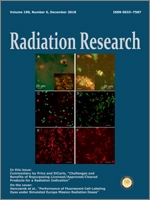We investigated the performance of several commonly used fluorescent dyes after exposure to a simulated Europa mission total ionizing radiation dose of 300 krad (3 kGy) applied using a 60Co source. Dyes irradiated in aqueous solution or as lyophilized powders were evaluated for absorbance and emission spectra, quantum yield, and where appropriate, ability to label cells or nucleic acids. Although some dyes showed significant increase or decrease in quantum yield with the dose, their spectra and cell-labeling properties remained essentially unchanged after irradiation in powder form. Irradiation in aqueous solution led to significantly greater changes, including a large blue shift in the DNA intercalator propidium iodide. These results suggest that many fluorescent probes are appropriate for use in astrobiological missions to Europa, but that SYTO9 and propidium iodide should be used with caution or not mixed with each other, as is commonly done in “Live/Dead” labeling applications.
How to translate text using browser tools
16 October 2018
Performance of Fluorescent Cell-Labeling Dyes under Simulated Europa Mission Radiation Doses
Iulia Hanczarek,
Aaron J. Kenna,
Chris Lindensmith,
Jay Nadeau
ACCESS THE FULL ARTICLE

Radiation Research
Vol. 190 • No. 6
December 2018
Vol. 190 • No. 6
December 2018




